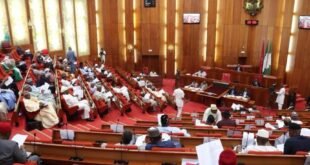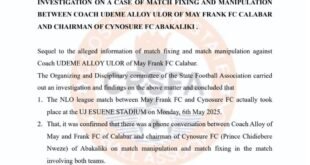The helicopter accident that claimed the life of the former CEO of Holdings Access, Herbert Wigwe, along with his wife, his son, and three, caused by pilot errors from spatial disorientation in poor weather conditions, according to the final report by the United States National Transportation Safety Council (NTSB).
Released on Wednesday, the NTSB report concluded that the fatal decision of the pilot to continue to fly under the visual aviation rules (VFR) despite the deteriorating weather conditions that require the Instrument Flights (IFR) rules caused the tragedy. The helicopter, identified as the N130CZ, descended near the California-Nevada border on February 9, 2024.
According to the report, “Pilots are likely to experience spatial disorientation when maneuvering helicopters at IMC \[instrument meteorological conditions]which causes loss of helicopter control and collisions produced with terrain. “
The accident resulted in the death of Wigwe, his wife Doreen, their son Chizi, former Chairman of the Nigeria Abimbola Ogunbanjo, and two crew members.
Also read: Singer Simi revealed how he avoided heartbreak before marriage
The investigation also exposed critical deviations in the part of the helicopter operator, accused of NTSB “inadequate supervise of the process of safety management.”
The investigator found that the vital helicopter radar altimeter for height awareness was not functioning before the last flight. “A company mechanic does some problem solving on the radar altimeter; However, he cannot fix this problem, and the radar altimeter still does not function,” the report said.
Despite being aware of the error, the pilot and maintenance director continued with a flight for determining the position to pick up passengers. “The mechanic reports that the pilot and dom \[director of maintenance] Aware that the radar altimeter did not function, but they departed in 1822 on the flight to determine the passengers, “said NTSB.
In addition, there was no discussion recorded between the pilot and the company’s flight followers regarding the wrong equipment or the current weather conditions after reaching the passenger.
The report emphasizes that the company fails to enforce the appropriate pre-flying risk assessment, maintenance documentation, and compliance with regulatory procedures.
“The pilot’s decision to continue flight visual flight rules to the meteorological condition of the instrument, which resulted in spatial disorientation of the pilot and losing control,” in the end determined as “possible causes of this accident,” the council concluded.
Join the conversation
Supports Nigeria’s ripples, resistant Journalism Solutions
A balanced and fearful journalism that is driven by data comes with enormous financial costs.
As a media platform, we ask for leadership accountability and will not trade the right to suppress freedom and freedom of speech for a piece of cake.
If you like what we do, and ready to uphold journalism solutions, friendly Nigerian ripples cause.
Your support will help ensure that residents and institutions continue to have free access to credible and reliable information for community development.
Donation now
 JamzNG Latest News, Gist, Entertainment in Nigeria
JamzNG Latest News, Gist, Entertainment in Nigeria










